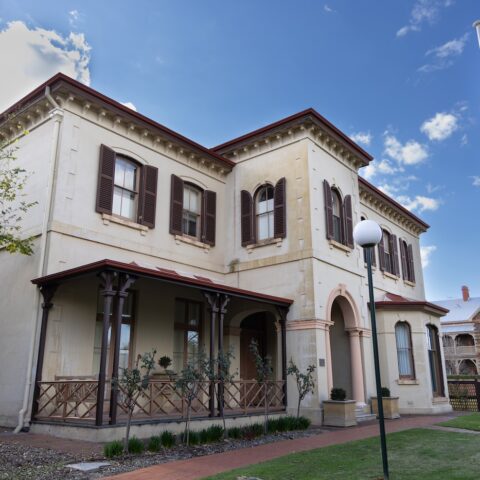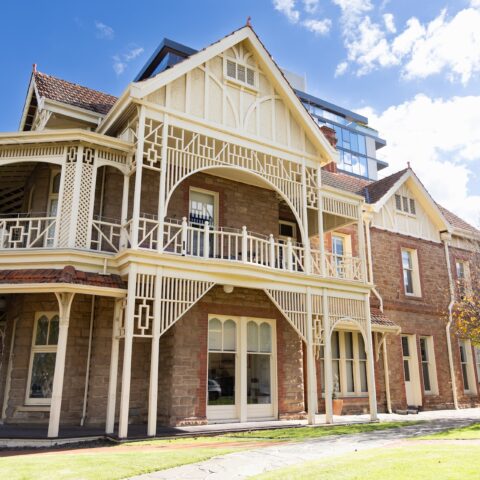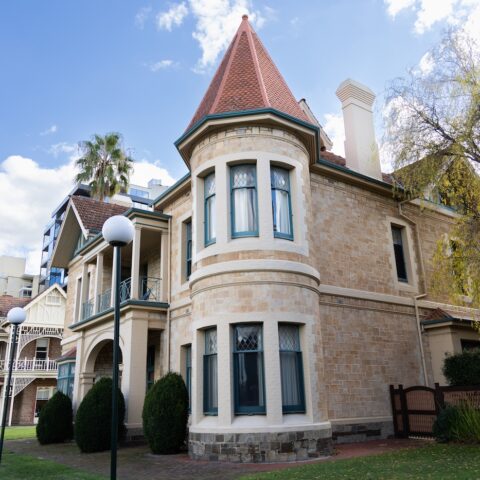History
Lincoln College was founded by the Methodist Conference in 1952 after many years of planning and fundraising.
It was named after Lincoln College, Oxford, considered by some to be the seat and origin of Methodism and one of the oldest colleges at Oxford University.
Over the years, Lincoln College has been guided by a series of distinguished leaders, each contributing unique strengths and perspectives to its development. Their leadership has shaped the college into the vibrant and supportive community it is today.
- Reverend Frank Hambly (BA, BD) – Master of Lincoln College (1952-1972)
- Reverend John Whitehead – Master of Lincoln College (1972-1984)
- Dr. Geoffrey Scott – First Principal (1984-1994)
- Dr. Peter Gunn – Principal (1996-2004)
- Mr. Ken Webb – Principal (2004-2007)
- Ms. Rebecca Pannell – First Female Principal (2007-2013)
- Linda Bastick – Principal (2013-2017)
- Dr. Paul Tosch – CEO (2017-2023)
- Carolyn Mee – Current Head of College (2024-present)
Lincoln College has experienced steady growth since its inception.
Starting with an intake of approximately 23 residents, the college now accommodates more than 200 students. From its early days, Lincoln has been a welcoming home for university students from across Australia and around the world, fostering a multicultural community centered on inclusion. Originally established as a college for young men, Lincoln opened its doors to women in 1973, embracing and contributing to positive social change and the principles of egalitarianism.
Four of our campus buildings are state heritage-listed: Milne House, Whitehead Building, Abraham House and Federation House. These historic buildings, which line Brougham Place, provide a majestic and welcoming entrance to the campus.
Federation House
Federation House (32 Brougham Place) was once the residence of Sir Richard Chaffey Baker, a prominent barrister, pastoralist and politician. Sir Richard was the first South Australian-born member of the Legislative Council, later becoming a Senator and the first President of the Australian Senate.
After extensive renovations, Federation House was re-opened in 2009 and now houses student rooms, a common area, a kitchen and dining room, as well as a boardroom and a self-contained “flat” for onsite staff.
Abraham House
Abraham House, located to the left of Federation House, is named in honor of Dr Samuel Abraham. A former resident in the 1950s, Dr Abraham went on to have a distinguished career as a pediatrician, both overseas and in Australia. He was also a passionate advocate for philanthropic projects in Malaysia.
The Whitehead Building
The Whitehead Building, located at 39 Brougham Place, was built in 1907 and is named after the second Master of College, Rev John Whitehead, and his wife, Mrs Whitehead. The building was once the home of Sir Arthur Rymill, a former Lord Mayor of Adelaide, after whom Rymill Park is named. This grand sandstone villa, complete with a tiled tower, is a prime example of Edwardian-era architecture. Today, the Whitehead Building serves as the residence of the CEO of Lincoln College.
Milne House
Milne House, located at 45 Brougham Place, houses the college administration on the lower level and senior resident rooms on the second floor. Built in the late 1880s for wine merchant George Milne, it was the first building purchased by the Methodist Church in 1951 to establish what would become Lincoln College



